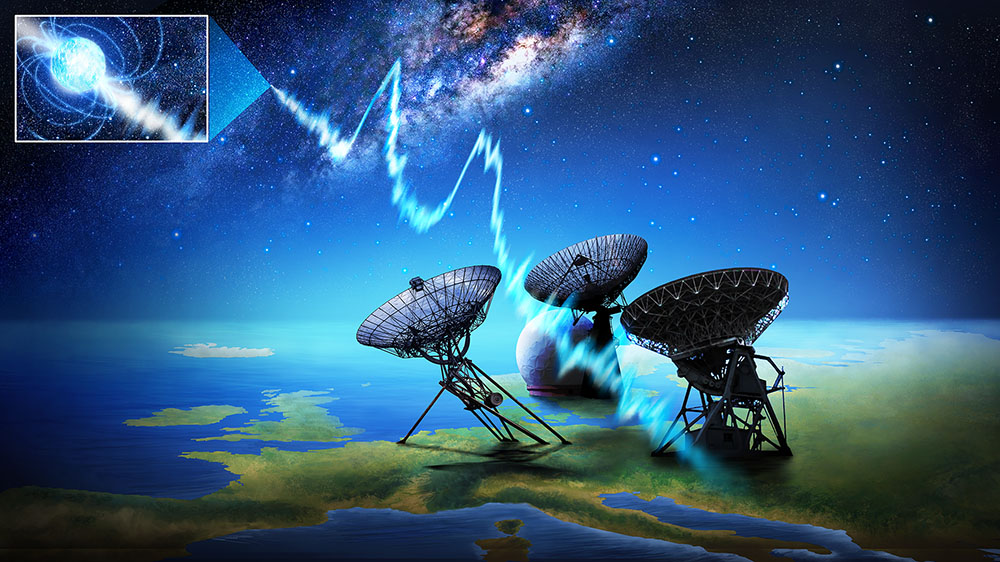 April 29, 2021
April 29, 2021
Fast radio bursts are millisecond-duration, bright radio signals (fluence 0.1-100 Jy ms) emitted from extragalactic sources of unknown physical origin. The recent CHIME/FRB and STARE2 detection of an extremely bright (fluence ~MJy ms) radio burst from the Galactic magnetar SGR 1935+2154 supports the hypothesis that (at least some) fast radio bursts are emitted by magnetars at cosmological distances. In follow-up observations totalling 522.7 h on source, we detect two bright radio bursts with fluences of 112 ± 22 Jy ms and 24 ± 5 Jy ms, respectively. Both bursts appear to be affected by interstellar scattering and we measure significant linear and circular polarization for the fainter burst. The bursts are separated in time by ~1.4 s, suggesting a non-Poissonian, clustered emission process—similar to those seen in some repeating fast radio bursts. Together with the burst reported by CHIME/FRB and STARE2, as well as a much fainter burst seen by FAST (fluence 60 mJy ms), our observations demonstrate that SGR 1935+2154 can produce bursts with apparent energies spanning roughly seven orders of magnitude, and that the burst rate is comparable across this range. This raises the question of whether these four bursts arise from similar physical processes, and whether the fast radio burst population distribution extends to very low energies (~1030 erg, isotropic equivalent).
Kirsten, F., Snelders, M. P., Jenkins, M., et al. 2021, Nature Astronomy, Volume 5, p. 414-422.
